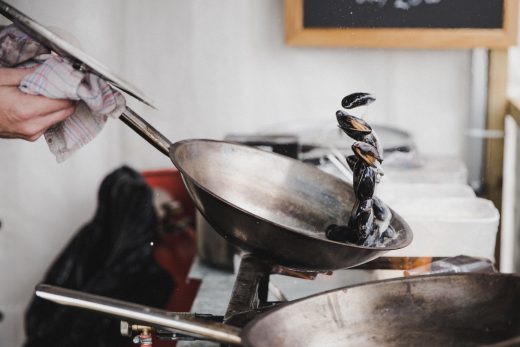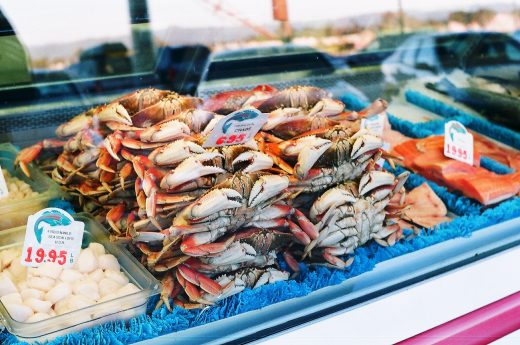Guest post by Isabella Sulpizio, Ocean Wise Seafood Accounts Coordinator
Shopping for seafood can be such an exciting experience. There are so many colours, textures, tastes and flavours to play with. The possibilities for cooking are endless and the recipes can be anywhere from pop it in the oven simple to googling cooking techniques you have never even heard of. However, when it comes to understanding if a seafood option is good for you and the environment, you need to think about a little bit more than taste and texture.
With the Ocean Wise sustainable seafood program, we use several criteria to determine if something is a sustainable wild option and even more for farmed seafood. To keep it simple, we will focus on our wild criteria:
- It must be coming from a healthy and abundant stock
- The fishery must be well managed
- Harvesting must have limited impacts on the surrounding environment
- Harvesting the species must not impact other species within that same ecosystem (known as bycatch)
As you can see, finding sustainable seafood can be quite a complicated process! We try to do our best to simplify that process by working directly with businesses to help them find sustainable options and clearly label their sustainable options as Ocean Wise recommended on their menus or in their fish counters. However, if you are at a restaurant and don’t see the Ocean Wise symbol, how do you know if it is a sustainable choice?

Buy Canadian:
We are so fortunate to live in a country that borders three oceans! Canada also has some very well managed and sustainable fisheries offering up plenty of options for whatever suits your palate. Whether you are looking for shellfish such as mussels, oysters or snow crab, finfish such as black cod or pacific halibut, you really need to look no further than our own waters.
Ask the Questions:
If you don’t know if the seafood in your dish is sustainable, you should make a point to ask. Even if your server/fishmonger or chef don’t know, you are sending a clear message to that business that as a consumer, this is something that is important to you!
Pay Attention:
If you are eating Atlantic salmon and the menu says that it is wild, unfortunately that is not true. All Atlantic salmon available in the market today is farmed. Depending on how it is being farmed, this is not necessarily a bad thing. A great example of sustainably farmed Atlantic salmon is Sustainable Blue. They are a land based recirculating salmon farm based in Nova Scotia. By closing their farming practices off from the outside environment, they are able to control everything that goes in to their farm and therefore don’t need to use antibiotics or deal with other aquaculture issues such as sea lice.
What About Cost:
Not all sustainable seafood is expensive. There are many sustainable options available that will not break the bank. PEI mussels are just one fantastic example of an affordable, versatile and delicious sustainable seafood option.
Look for the Label:
When purchasing seafood in a grocery store, try to look for an eco label that you trust and provides a bit more information on the sourcing of the seafood option such as indicating if it is farmed or wild or the region that it came from. Eco labels are a great benchmark for ensuring that you are making a sustainable and informed choice.
If you are a curious consumer and want to know more about where your seafood is coming from, try some of these tips on your next seafood journey, and look for the Ocean Wise seafood symbol, to ensure your purchasing choices are making a positive impact on our worlds lakes, rivers and oceans.
Follow Ocean Wise
Website: seafood.ocean.org
Facebook: @oceanwiselife
Instagram: @oceanwiselife



